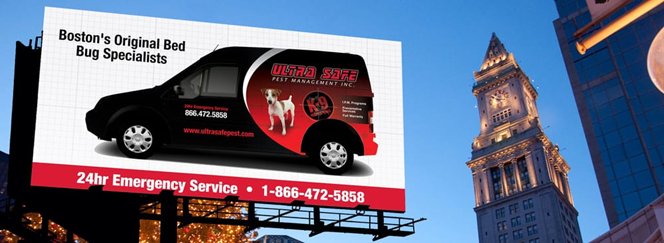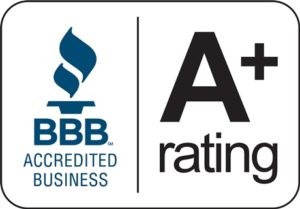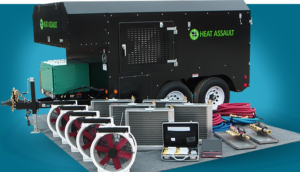Expert Bed Bug Preparation
With decades of experience in Bed Bug Preparation and thousands of bed bug services performed, Ultra Safe’s bed bug experts know what it takes to properly prepare a property for a successful bed bug treatment.
It is important to remember that each treatment site is unique and prep adjustments should be made accordingly.
Our bed bug preparation experts can help prepare rooms in a fast, efficient, and organized manner so that the treatment will be as successful as possible.
Bed Bug Preparation For Conventional Insecticide Treatment
PREPARATION FOR WHEN NO HEAT EQUIPMENT IS INVOLVED!
Bed bugs typically stay very close to where people sleep and rest. Therefore, kitchens and bathrooms will typically require the least attention during the preparation.
Bed Bug Preparation efforts will be best utilized in bed rooms, living rooms and nearby areas.
How To Handle Mattresses, Bed Linens, and Clothing During Bed Bug Preparation
Remove and bag all bed linens, pillowcases, bed-skirts etc, in heavy duty contractor grade plastic bags. Only bare mattresses box springs and should remain.
Despite what others say, we would prefer that the beds, mattresses, box springs, frames. headboards remain in place.
*Warning – Moving or disturbing infested furnishings can cause bed bugs to scatter and possibly spread to adjacent areas.
Experienced bed bug technicians should position furniture in a way that maximizes the treatment while minimizing the spread of bed bugs.
Preparing Clothing In Drawers
Remove and bag all clothing and fabric related items from dressers, shelves, and nightstands: This means EVERYTHING. The bed bug technicians will need to pull out all drawers to insure a thorough application to all seams, joints and crevices of the furniture itself.
Preparation For Closets
When preparing closets for a bed bug treatment, clothing hanging and items suspended from the floor can usually stay in place.
Other items like shoes, hand bags and other personal items on the floor must come out so the base of the closets can be inspected and treated accordingly.
Curtains & Drapes
Take down and bag all curtains and drapery: Blinds, shades and other solid surface window treatments CAN stay. Just cloth materials safe for a dryer should come down.
Proper Handling Of Bed Bug Infested Laundry
Clothing, bed linens, curtains, plush items, stuffed animals etc: Must be laundered and put through a hot dryer.
If items are clean, you can skip the washer and go straight to the hot dryer on highest setting for 60 minutes. Commercial Laundromats have the hottest dryers with larger capacity than most household dryers.
It is very important that, when laundering clothes for bed bug treatment preparation, to be careful not to contaminate any nearby areas or items at the laundry facility. Use heavy duty plastic bags doubled up and tied tight. Discard bags after each use.
How To Handle Personal Items and Clutter During Bed Bug Preparation
Clutter, boxes, books etc, MUST be removed or organized in a way that allows for proper inspection and treatment.
This is best achieved by sorting through all personal belongings. If there are items you have been meaning to throw out, now is the time to do it.
You do NOT need to throw away any furniture unless it is in very poor condition.
Prepare Remaining Personal Items
The remaining items should be organized toward the center of the room for bed bug technicians to inspect and treat accordingly. It is important to leave some space between items so a thorough treatment can be performed.
People and Pets
Be ready to have all people and pets to vacate the premises: We typically require an 8 hour re-entry time for our bed bug treatments. Depending on the size of property and type of services being performed, these times can vary. Please consult with the on-site professionals.
Bed Bug Follow-Up Inspection and Treatments
Bed bug treatments should have at least one follow-up inspection/treatment 10 to 14 days following the initial treatment.
PLEASE NOTE
It is not uncommon to find dead/dying bugs for up to 48 hours following a treatment. Bugs have been worked out of hiding spots and may not die instantly in all situations. It is important to consult with your pest professionals.
Bed Bug Heat Treatment Preparation
Bed Bugs are a very resilient and challenging pest to eradicate. In order to maximize the effectiveness of the treatment and protect personal belongings, please insure the following instructions are followed when prepared for a bed bug heat treatment!
Protecting Fire Sprinkler Systems During Bed Bug Heat Treatments
By Nici Lucas (Pest Control Technology)

Essentially, the National Fire Protection Association (NFPA) has defined rules related to sprinkler system installation, and as a result, temperature ratings have been established in the industry.
Color codes have been established to identify which rating of sprinkler (or the operating temperature) is installed, and the colors indicate the following operating temperatures and classifications:
- Orange 135°F — Ordinary
- Red 155°F — Ordinary
- Yellow 175°F — Intermediate
- Green 200°F — Intermediate
- Blue 286°F — High
- Purple 360°F — Extra High
SPRINKLER IMPAIRMENTS
In general, NFPA has governed that an impairment is a condition where a fire protection system in full or in part is out of order and could cause the system to fail in a fire event. And, when an impairment occurs, impairment procedures must be followed; and, when the system is restored, testing must occur to ensure that the system works properly. Impairment is caused by the attachment of foreign material, sprinkler blockage or obstruction, or the water supply being turned off.
Included in the impairment procedure process is a series of notifications that must be made, including making notifications to the following individuals and organizations:
- Building owner or property manager
- Fire department
- Insurance carrier
- Alarm company
- Authorities Having Jurisdiction (AHJ), which could be the building department, fire marshal, etc., depending on local jurisdiction and regulation
Checklist For Common Items That MUST Be Removed During Bed Bug Heat Treatments
- Pets/people – including fish in aquariums
- House plants – both live and artificial
- Fresh food, fruits, vegetables, etc.
- Food that melt – chocolate, candy, etc.
- Prescription and over the counter medications
- Make-up – especially lipstick (wax based)
- Wax based items – Candles, wax figurines, wax fruit
- Anything pressurized – spray cans, fire extinguishers, oxygen bottles, etc.
- Flammables lighters, lamp fuel, alcohol, solvents, etc.
- Explosives – Firearms, fireworks, etc.
- Wooden and stringed musical instruments – May warp in high heat. Leave the cases to be treated.
- Family heirlooms, valuable paintings and irreplaceable items should be inspected and a determination made as to whether they should be treated.
- Furniture – needs to be moved 2 feet from the wall to the middle of the room.
*Please Note: Larger items can be boxed and left by the door for inspection. It will be determined if any of these items need to be treated for bed bugs.
Clothing And Heat Treatments
Bed bugs will seek shelter on and within clothing
To avoid re-introducing bed bugs, any clothing removed from the space before a thermal remediation treatment must be dried at high temperatures before being returned to the treated areas.
- Drying using the hottest dryer setting will treat most clothing.
- Avoid contaminating the freshly dried clothing. Do not return the clean clothing to the container (bag, basket, etc.)
- Place clothing left in open weave laundry baskets. Pack loosely!
- Tightly packed baskets will prevent lethal temperatures from reaching all items. Do NOT place clothing in plastic bags!
- Clothing must be removed from drawers!
- Also, it may become necessary to remove the drawers from dressers to help with the air movement/treatment.
- Clothing on hangers may be left in closets if the space between the items is large enough to allow the heated air to circulate. Arrange hanging items to open up air space between them.
Bed Bug Heat Prep For Larger Fabric Items, Curtains etc.
These items should be left in the area being heated, because they are likely to shelter bed bugs.
Place these items in open weave laundry baskets. Pack the items very loosely to allow for air circulation. Do not pack into plastic bags.
Bed Bug Heat Treatment Preparation For Papers, Books, Small Items, Figurines and Collectibles
A bed bug thermal treatment requires moving large amounts of air, so that lethal temps can be reached in all areas being treated.
Because fragile items can be blown around and damaged during treatment, it is important to protect them during preparation.
-
- Gather and contain any loose papers to avoid them blowing around during treatment.
- Secure glass items, knick-knacks and other collectibles.
- Do not leave breakable items on shelves or other areas because they could fall during treatment.
- Take down pictures, paintings, and other wall-mounted items.
Bed Bug Preparation For Electronics, Televisions, Computers etc.
-
- Electronics are a hiding place for bed bugs, therfore please do not remove electronics from treatment areas.
- Disconnect all electronic appliances by unplugging from the wall outlet to avoid damage during treatment.
Bed Bug Prep For Waterbeds and Air Beds
Drain waterbeds so the bed frame can reach lethal temperatures.
Avoid damage by partially deflating airbeds because these items may be moved around during treatment.
Bed Bug Preparation Tips
Tip 1: Allow yourself the proper time to prepare to avoid having an overwhelming chaotic mess on your hands!
Tip 2: When addressing the clothing and washables, decide what items and clothing you will need for use between the first and second treatment. Anything you won’t need can come right out of the dryer into tied tightly in industrial strength plastic bags until after the 2-week follow-up. This will save you a lot of work at that time.
Tip 3: When looking for a place to store bags of cloths and other items, the kitchen, garage, screened porches and basements make good choices. Keep these items out of the treatment areas.
Tip 4: The most important Tip you will ever hear! Never try to treat a bed bug infestation or allow any unqualified individual to attempt treatment because Bed bugs are very difficult to treat without extensive knowledge and training.
“Do It Yourself” bed bug treatments, bed bug “bombing” any self spraying, more often than not will make matters worse because bed bugs are very sensitive to foreign substances and will try to escape the area as quick as possible.
DIY Bed Bug Treatments
DIY Treatments often drive the bugs into adjacent rooms or units as homeowners try to “douse everything down with insecticide”. The bed bugs look to escape the onslaught by moving deeper into wall voids making them even harder to detect and treat properly.
In addition to very poor success rates, do-it-yourself bed bug extermination often leads to the misapplication or “misuse” of pesticides and other dangerous substances.
A professional Bed Bug Technician will know how to treat in a way that maximizes success and minimize the risks associated with insecticides.
Professional Bed Bug Services
Please contact us for additional information or to schedule an on-site Bed Bug Inspection.






